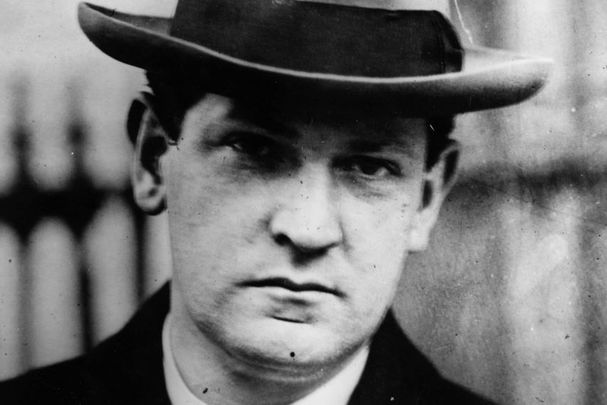Who is the man thought to be responsible for Michael Collins' death?
Information has emerged in recent years about the man believed to have shot Ireland’s revolutionary leader Michael Collins, including the revelation that he had previously met “the Big Fella” twice.
Denis “Sonny” O’Neill, a former Royal Irish Constabulary and IRA officer who fought on the Anti-Treaty side in the Irish Civil War, was at Béal na Bláth on August 22, 1922, for the ambush that took Collins’ life.
According to pension records published by Ireland’s Military Archives and analyzed by the Irish Independent, he claimed that his presence that day was an accident.
“We accidentally ran into the Ballinablath [sic] thing. We took up a position, and held it there until late in the evening,” he said in a sworn statement delivered in 1934 when he was applying for a military pension.
The Collins party had been delayed and O’Neill and his comrades were about to abandon the ambush when they heard the Collins group approaching.
Collins leaped from the car and began firing when they came under fire. He was shot by a single bullet through the head and died instantly.
O’Neill also had two personal encounters with Collins while working with the IRA during the War of Independence. The first was in 1920, when he was introduced to Collins and a number of his confidantes; the second in 1921 when he was entrusted to deliver a message to Collins from London.
That these records survive is remarkable in itself, given that a 1932 government order directed all files pertaining to the Civil War be burned.
O’Neill, described in army intelligence files from 1924 as “a first-class shot and a strict disciplinarian” and “undoubtedly a dangerous man,” was born in Timoleague, Co. Cork in 1888.

Love Irish history? Share your favorite stories with other history buffs in the IrishCentral History Facebook group.
He served in the RIC and as a marksman for the British Army in WWI but was discharged after being shot in the arm.
Back in Ireland, he rose through the ranks of the IRA thanks to the access granted him by his RIC past. In the Irish Civil War, he fought on the Anti-Treaty side. The pension files paint a picture of a man on the run after the war ended, never staying in the same house two nights in a row.
Years later he settled in Tipperary, becoming a peace commissioner and a director of elections for Sinn Féin and Fianna Fáil. He died in 1950.
All of this information about O’Neill was included in the second cache of Military Pensions Archives published by the Irish Defense Forces and just made available online.
Between 1924 and 1949, the Irish government made those who had fought or performed intelligence work in the War of Independence and the Irish Civil War eligible for pensions.
In order to receive benefits, however, they had to provide evidence, personal testimony, and second-hand testimony of their service.
Because of this, the records are exceptionally detailed. The portion released, for example, includes 1,158 individual pension records, 77 administrative files, and 173,000 scanned documents, letters, and photographs. The site also includes a map of activity during the 1916 Easter Rising and a photo-identification project.
* Originally published in 2014. Updated in August 2023.




Comments